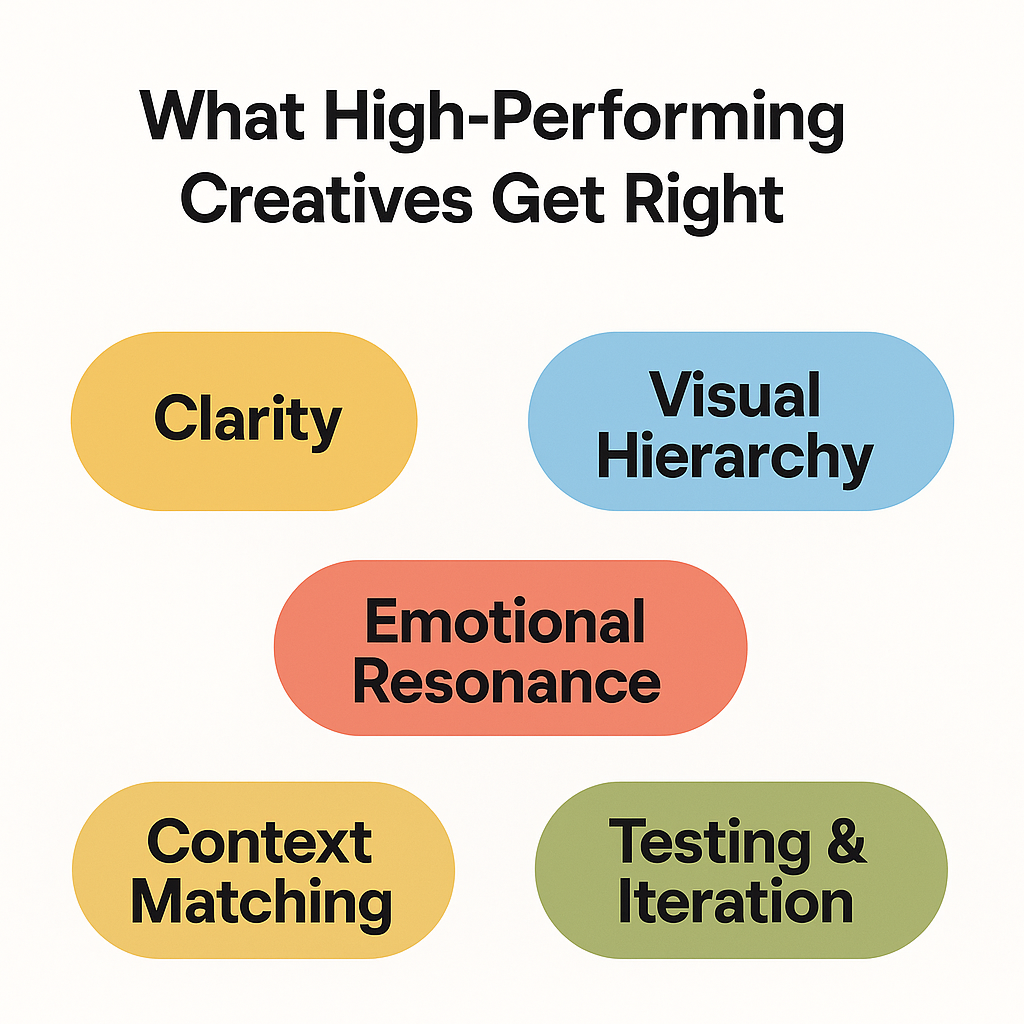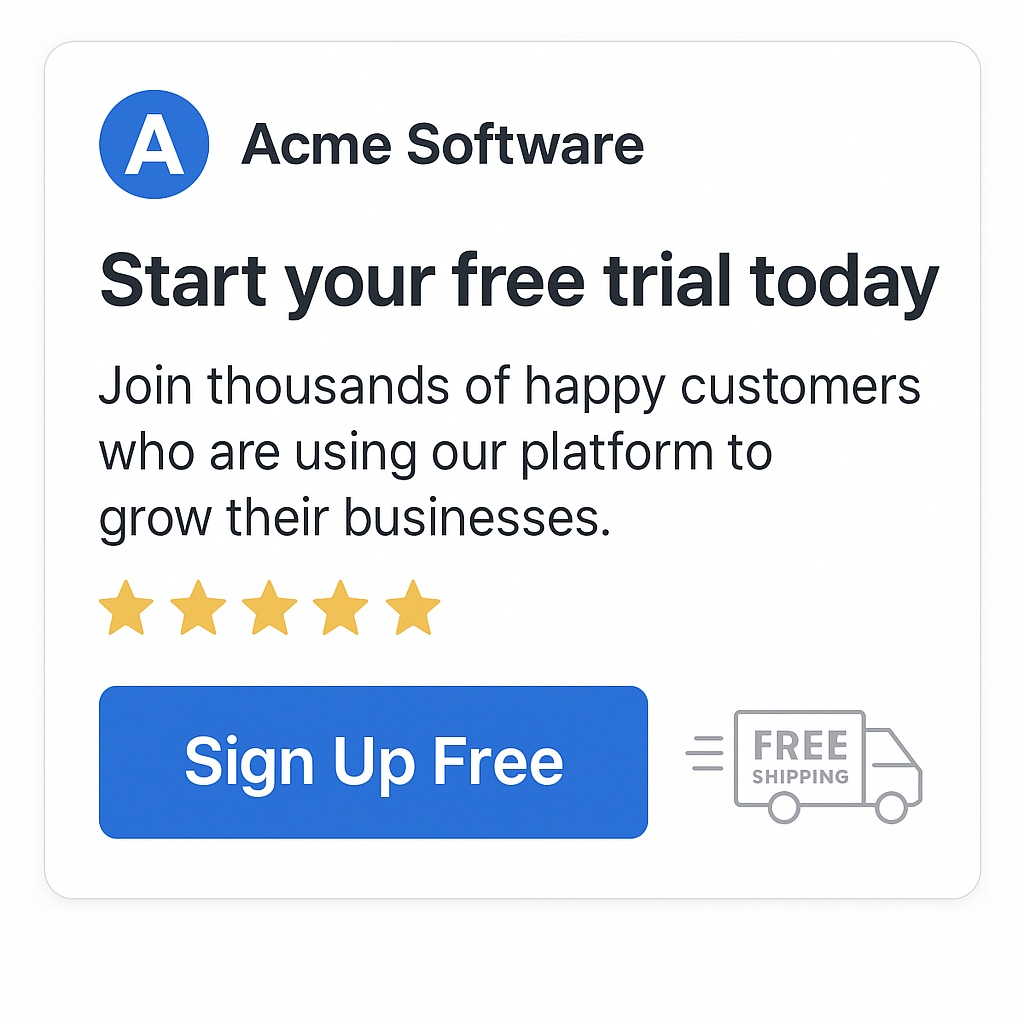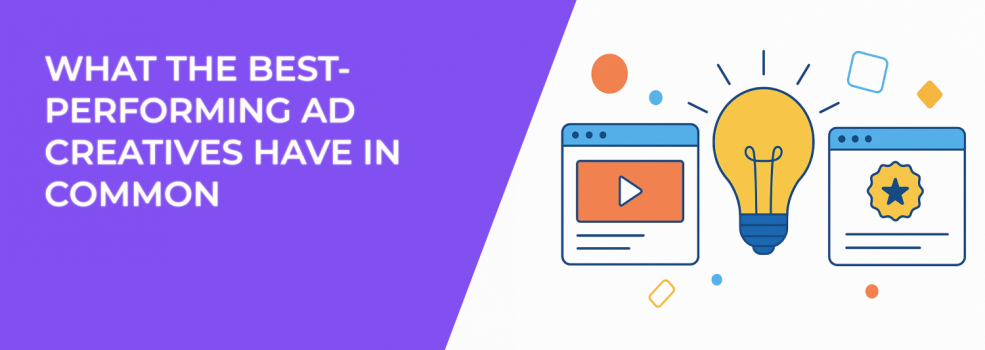Everyone talks about “good ads.” But if you’ve ever run multiple campaigns with the same budget and wildly different results, you know — not all polished creatives perform.
So, what do high-performing ad creatives consistently do that the others don’t? The answer isn’t just “use bright colors” or “keep the text short.” Those are surface-level fixes. Let’s go deeper.
This guide breaks down less obvious creative traits shared by ads that not only attract clicks — they convert, scale, and stay relevant longer.
1. They Don’t Just Match the Brand — They Match the Moment
Brand consistency is important. But great creatives also consider context: the platform, the scroll speed, and the emotional tone of the content around them.

That’s why it’s no longer enough to just follow brand guidelines — you need creatives tailored to placement and viewer behavior. If you're running Reels, for example, adapting your visuals to feel native is crucial. (See how to adapt one ad concept for Reels, Stories, Feed, and Explore).
2. They Optimize for Eye-Path — Not Just Aesthetics
You’ve likely seen ads with great colors and typography — yet they fall flat. Often, it’s because the design doesn’t guide the eye.
Great creatives are built on a visual hierarchy:
-
A dominant hook element, to stop the scroll;
-
Clean, directional layout that leads the eye through product visuals or offers;
-
A well-placed CTA, with contrast and space around it for visibility.
To better understand what people notice first — and how you can influence it — check out this breakdown on visual hierarchy in Facebook ads.
3. They Use Visual Cues to Anticipate Objections
This is a level of creative nuance most advertisers overlook. High-performing ads respond to buyer hesitation visually, not just through copy.

Examples include:
-
Overlaying a 5-star review near the CTA, to boost credibility;
-
Including a before/after photo, to emphasize transformation;
-
Adding micro-icons like “Free Returns” or “Ships in 24H,” to remove small purchase blockers.
If your ad is underperforming despite high-quality visuals, the issue may not be the design — it may be the missing context. Here’s a helpful guide on how to fix low-converting Facebook ads that digs deeper into creative misalignment.
4. They Embrace Tools That Speed Up Creative Testing
Most top-performing advertisers don’t rely on hunches anymore. They run structured tests — and they use tools that enable fast, high-quality iteration.
Creative teams now use:
-
AI image and text generators, to quickly build and refine assets;
-
Modular creative templates, for fast duplication and versioning;
-
Dynamic testing frameworks, to isolate what’s working at each funnel stage.
You’ll find a list of recommended tools in this roundup of the best AI text and image generators for 2024.
Still not sure what to test first? This article explains whether to prioritize creative, copy, or audience when performance is lagging.
5. They Scale Through Variation — Not Volume
Top creative teams don’t throw 50 ads at the wall. They build smart variations of what’s already working.
That means:
-
Keeping the same layout, but testing different color schemes or photo styles;
-
Using a strong testimonial format across multiple customer personas;
-
Rotating three headline variants, while holding the rest of the creative steady.
This isn’t about volume — it’s about learning faster, scaling smarter, and extending creative lifespan without burning out your audience.
Final Thoughts
Behind every high-performing ad is more than a bold headline. It’s data, psychology, and structure working together.
So, if your ads look “good” but don’t convert, ask yourself:
-
Is this designed for how people scroll — or how designers think?
-
Does the creative address unspoken objections — or just highlight benefits?
-
Are we optimizing the hook — or everything else too?
Once you start asking those questions, performance almost always follows.

